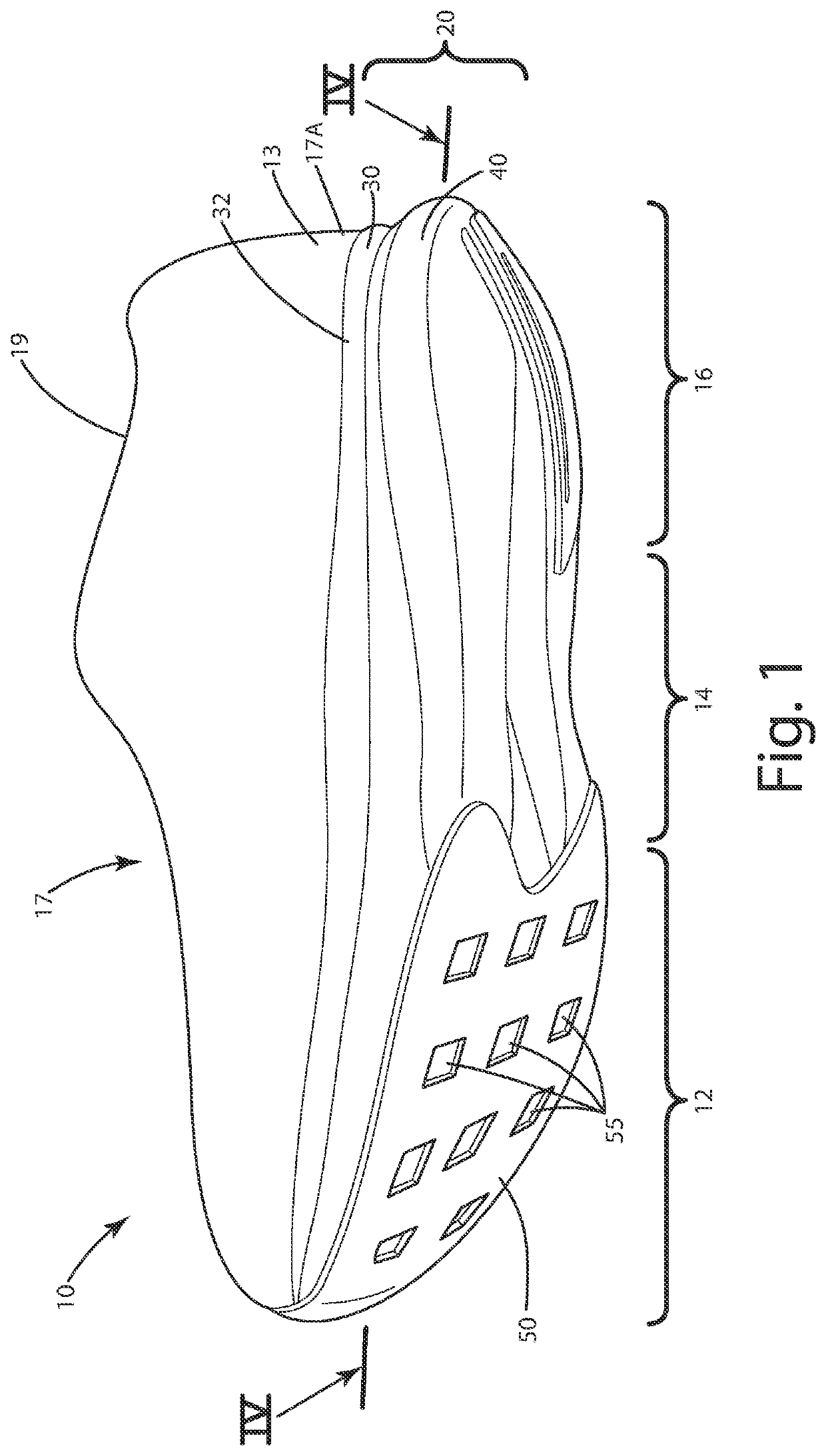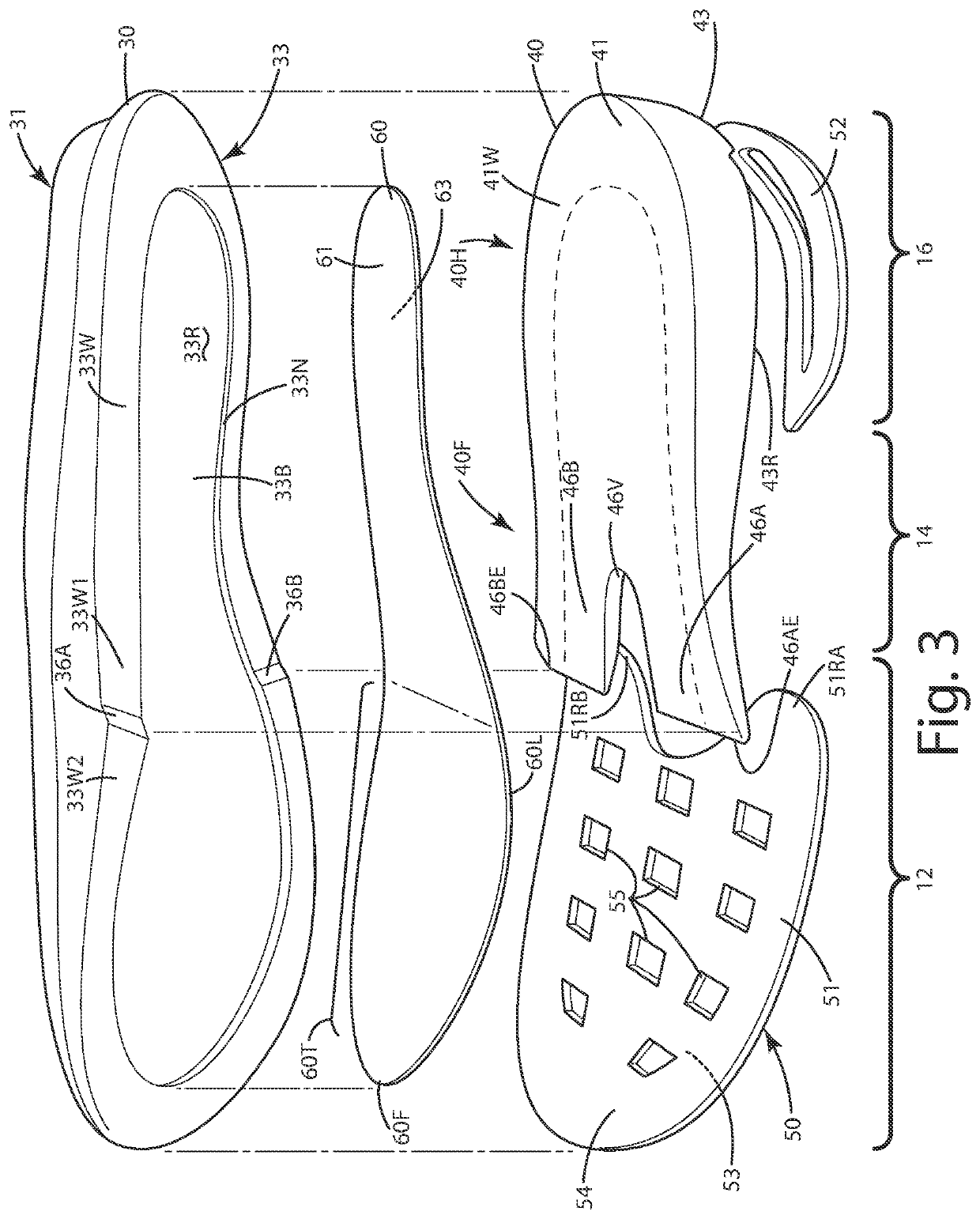Footwear with a composite plate sole assembly
a composite plate and sole assembly technology, applied in the field of footwear, can solve the problems of typical poor execution, too narrow, side parts of the plate to become too flexible,
- Summary
- Abstract
- Description
- Claims
- Application Information
AI Technical Summary
Benefits of technology
Problems solved by technology
Method used
Image
Examples
Embodiment Construction
[0049]A current embodiment of the footwear is illustrated in FIGS. 1-4 and generally designated 10. In this embodiment, the footwear includes a sole assembly 20 including a first midsole platform 30, a second midsole platform 40, a plate 60 therebetween and an outsole layer 50 having multiple treads in the forefoot region of the footwear, where the plate is directly above and engaging the outsole layer. Although the current embodiment is illustrated in the context of a running shoe, the sole assembly thereof can be incorporated into any type or style of footwear, including performance shoes, trail shoes and boots, work boots, all-terrain shoes, hiking shoes, athletic shoes, running shoes, sneakers, conventional tennis shoes, walking shoes, multisport footwear, casual shoes, dress shoes or any other type of footwear or footwear components. It also should be noted that directional terms, such as “vertical,”“horizontal,”“top,”“bottom,”“upper,”“lower,”“inner,”“inwardly,”“outer” and “out...
PUM
 Login to View More
Login to View More Abstract
Description
Claims
Application Information
 Login to View More
Login to View More - R&D
- Intellectual Property
- Life Sciences
- Materials
- Tech Scout
- Unparalleled Data Quality
- Higher Quality Content
- 60% Fewer Hallucinations
Browse by: Latest US Patents, China's latest patents, Technical Efficacy Thesaurus, Application Domain, Technology Topic, Popular Technical Reports.
© 2025 PatSnap. All rights reserved.Legal|Privacy policy|Modern Slavery Act Transparency Statement|Sitemap|About US| Contact US: help@patsnap.com



